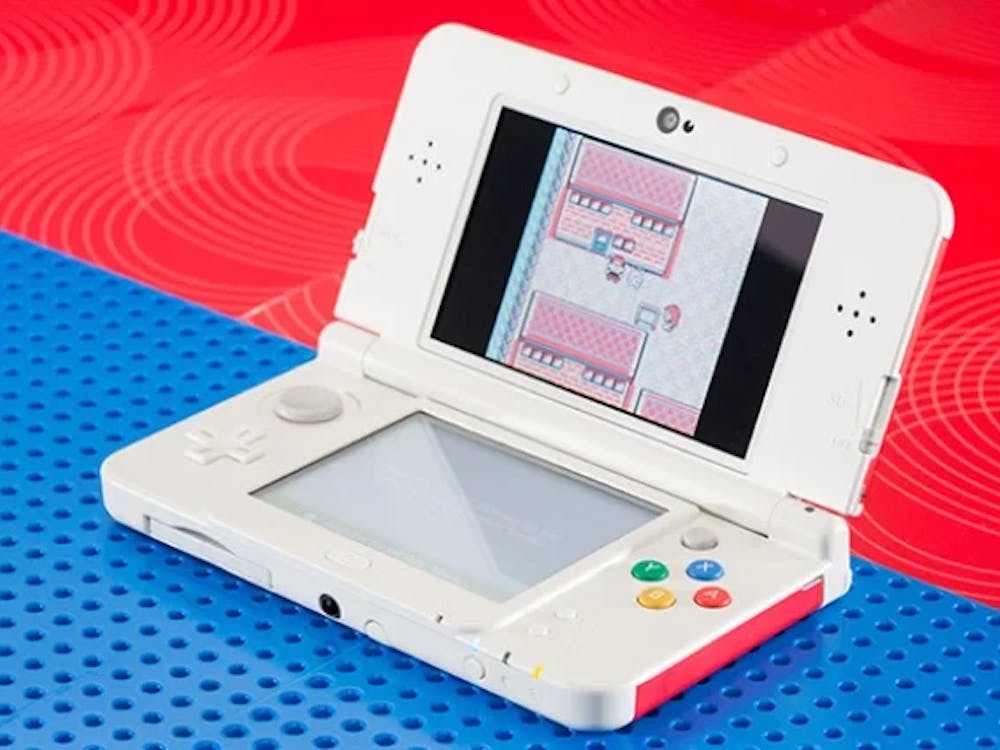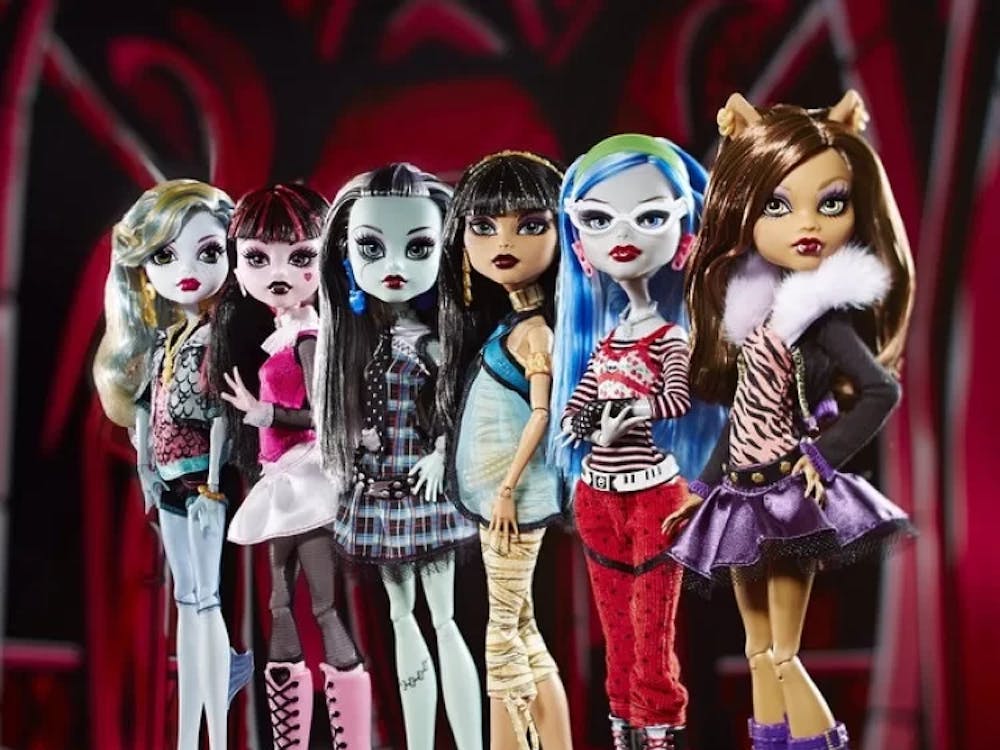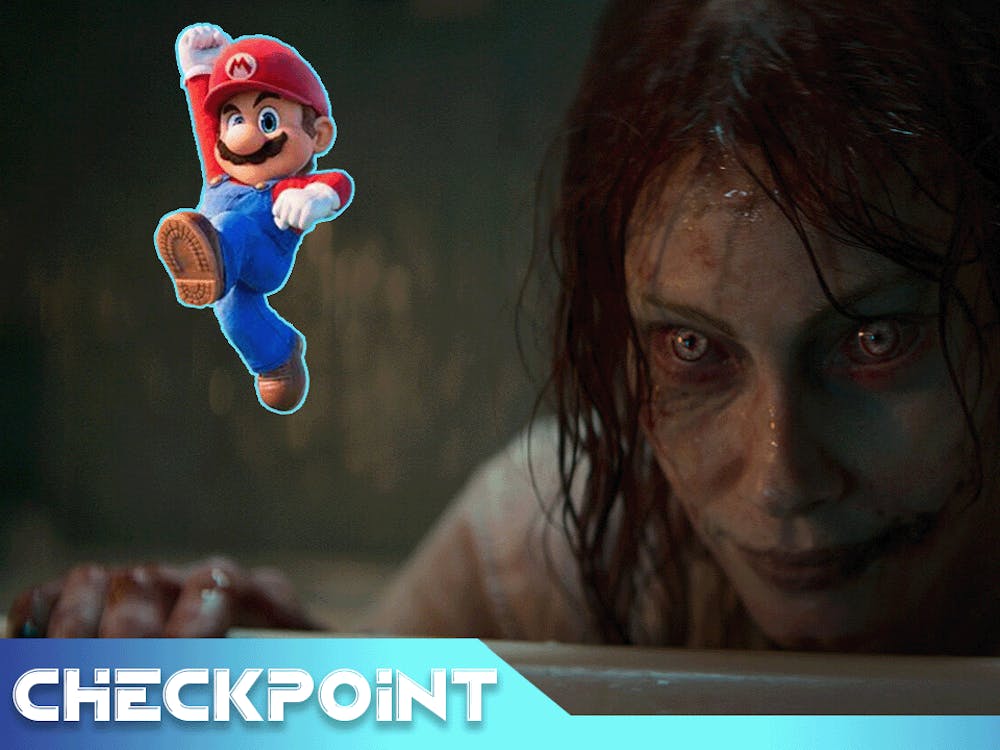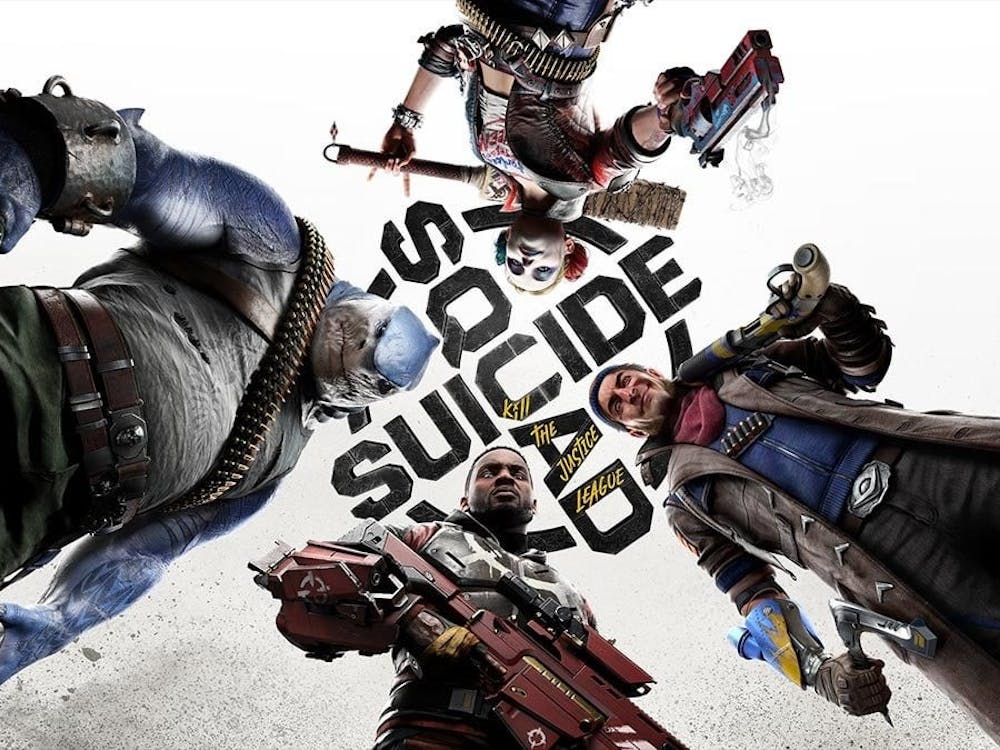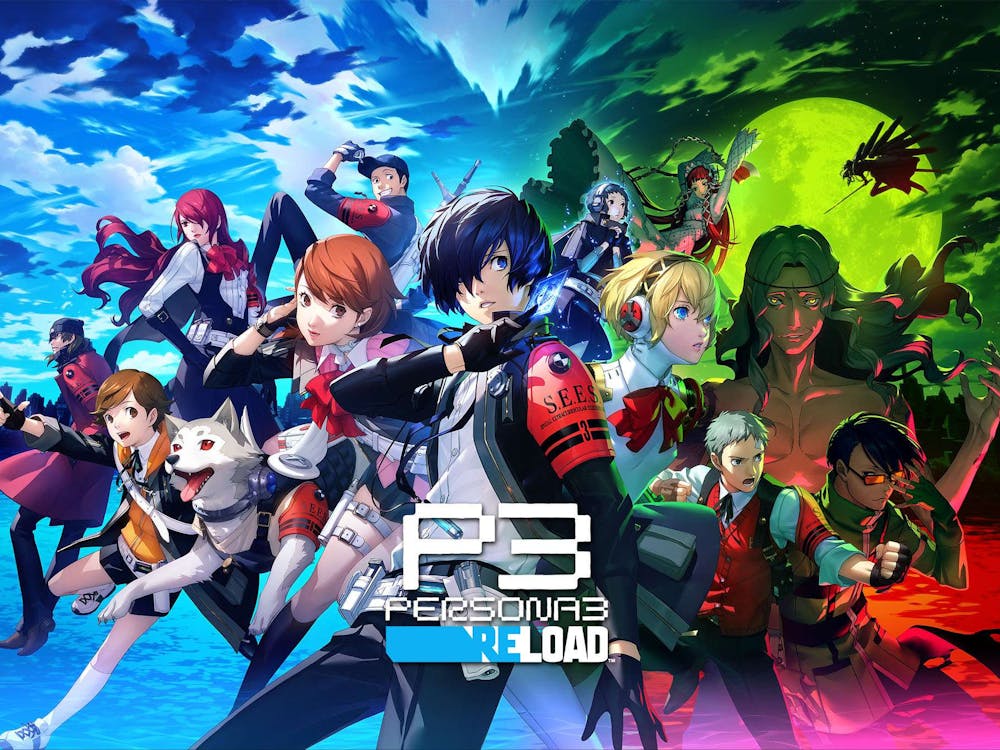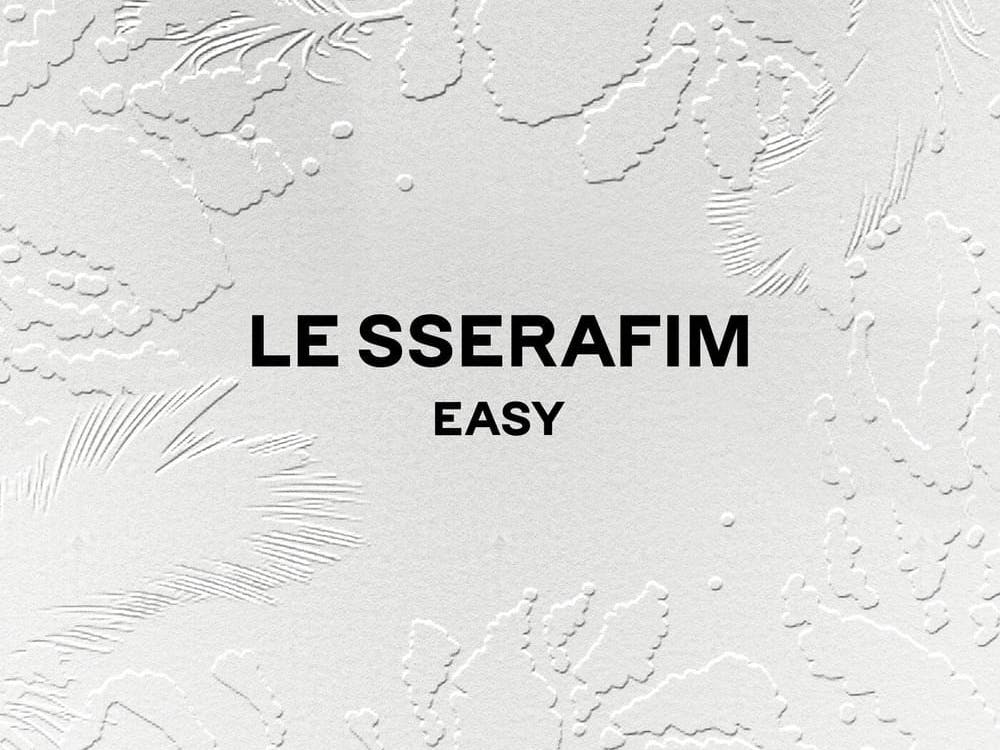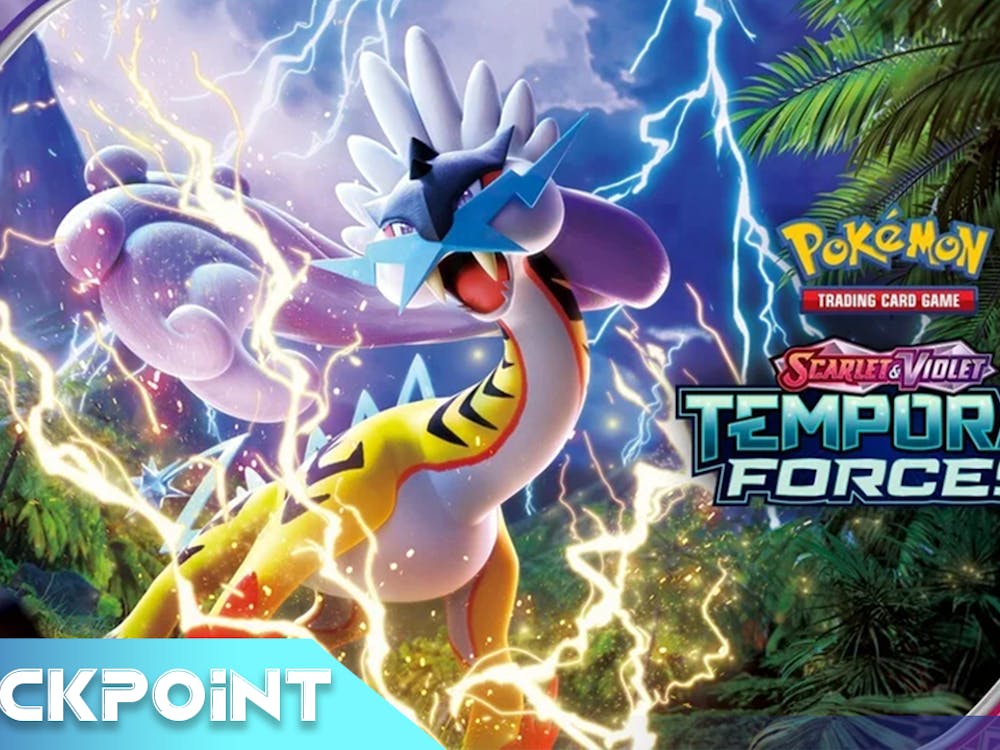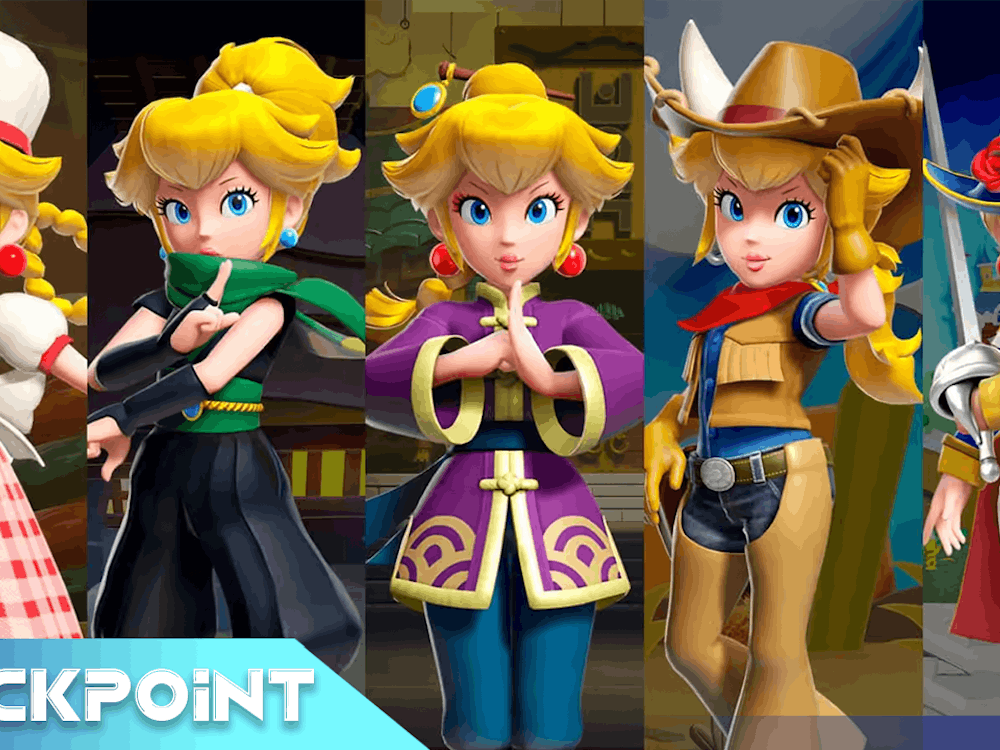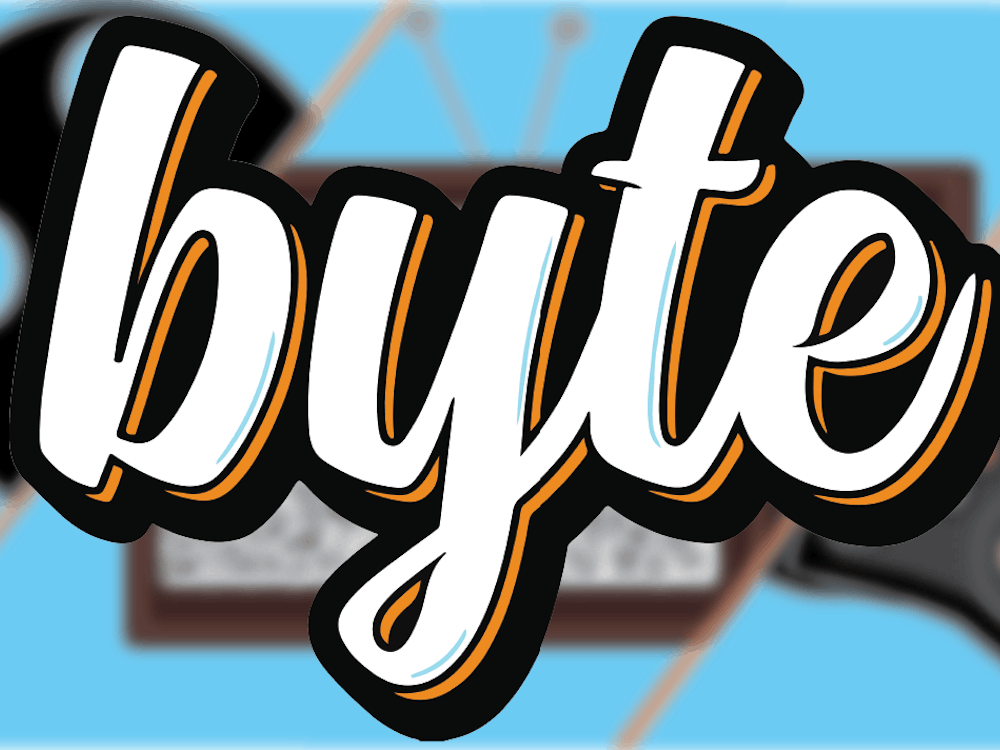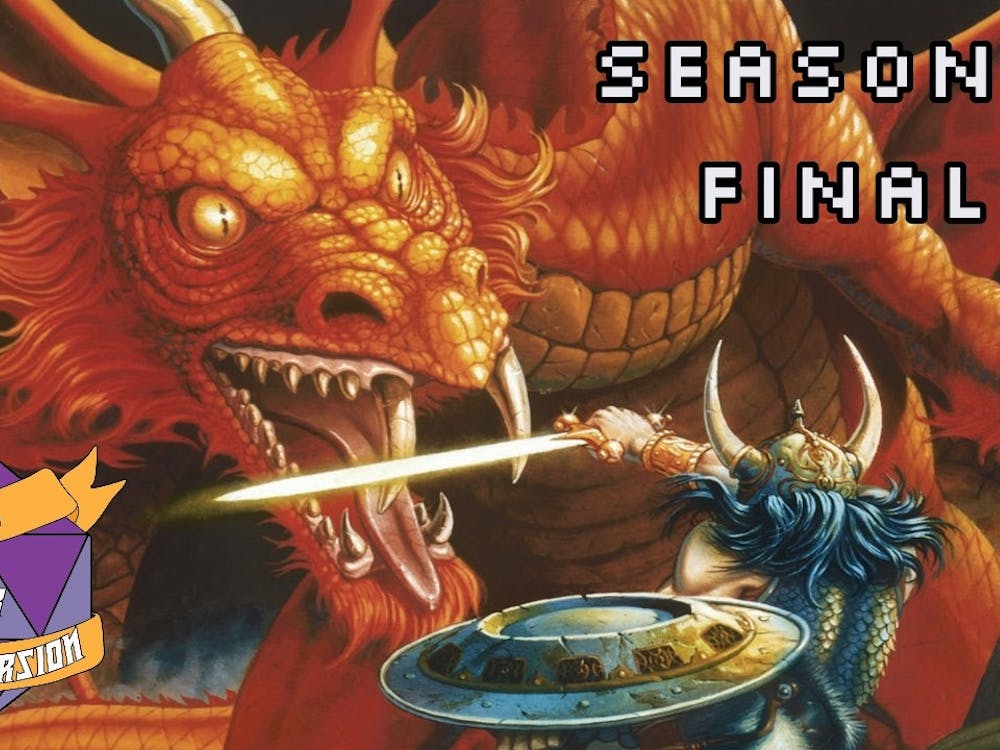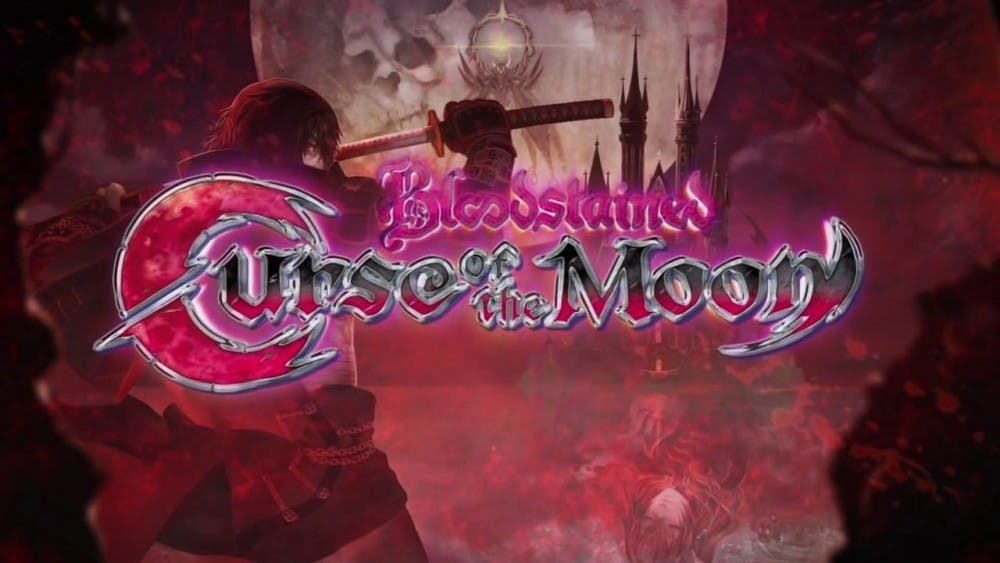Disclaimer: This review is of the PC version and was conducted on a PC with an Nvidia GeForce GTX 960, i7, 8GBs of RAM.
Castlevania is one of the original platformer franchises and a legend among fans of the genre. Yet Castlevania, along with its NES brother-in-arms Mega Man, was mishandled by the publisher for the longest time until eventually just getting put in cryostasis until someone could figure out what to do with it. While Capcom has decided to revive Mega Man in a big way with Mega Man 11, Konami has let their respective franchise fade to dust, with only a pachinko game being released under the Castlevania name. The producer behind Castlevania, Koji Igarashi, made a Kickstarter to launch their own spiritual successor to Castlevania, named Bloodstained: Ritual of the Night. This is similar to when Keiji Inafune swindled desperate Mega Man fans into funding a poorly managed rush-job called Mighty Number 9.
Fortunately, if Bloodstained: Curse of the Moon (developed by IntiCreates, rather than Igarashi himself) is anything to judge by, the future is looking much brighter for fans of classic Castlevania.
A true retro experience that’s beautifully stanky
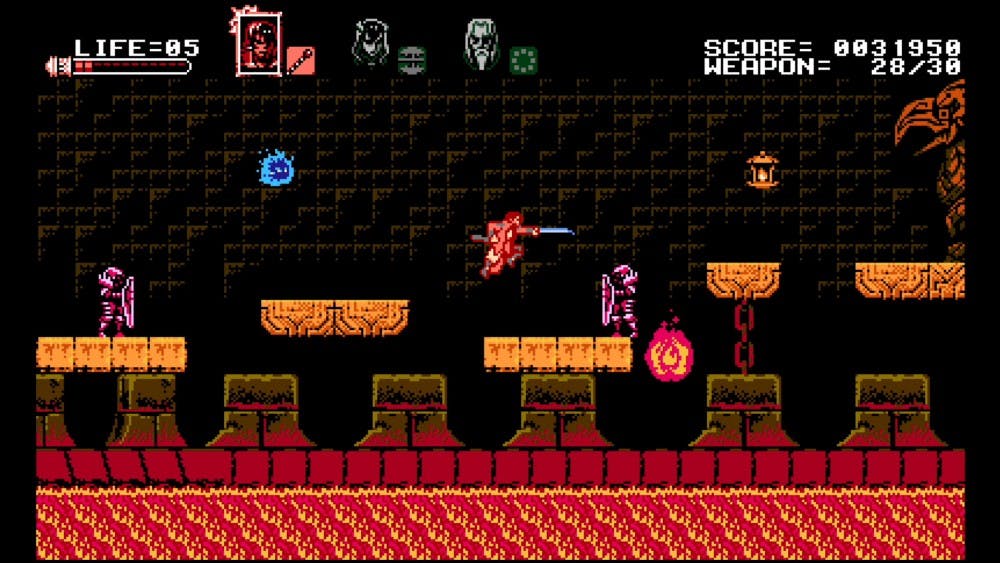
Image from Steam
There are hundreds of games that attempt to copy the 8-bit aesthetic, and only about seven of them actually nail the feel of playing a classic NES game. Games like Shovel Knight look and feel like they could’ve belonged on the NES, despite having plenty of more modern advances that make the gameplay itself smooth as butter. Bloodstained: Curse of the Moon joins that latter category of games that nail the 8-bit aesthetic while not sacrificing how the game feels.
When starting up the game, it’s almost scary how close it is to the original Castlevania. The influence is obvious almost immediately as the Simon Belmont stand-in, Zangetsu, starts his adventure outside a building with a few candles in his path. The design of the playable cast and the enemies the party faces is also lifted from classic Castlevania, with some minor design changes. The big difference comes in boss design. The bosses are very clearly an IntiCreates creation, similar to how they design bosses in their other retro platformers. These bosses are all just incredibly cool to watch, with impressive animations. All the animations are incredibly smooth and nostalgic, with only the bosses getting more frames of animation than what would be seen on a classic NES game. A particular favorite animation of mine is Gebel’s walk-cycle, which is loaded with a comical amount of swagger for an 8-bit sprite.
The music is incredible, with a lot of really great chiptune jams that would fit right in with the original Castlevania. The instrumentation nails that Konami platformer sound, while remaining atmospheric and suited to the environment. I would say the music feels more Mega Man than Castlevania due to the more upbeat nature of the soundtrack, but it’s a welcome change. A particularly good song is the music that plays before fighting the final form of the final boss. It’s a short little jingle, but it does so well at hyping up the player to take down not-Dracula.
Castlevania gameplay that is mostly a blessing, but sometimes a curse
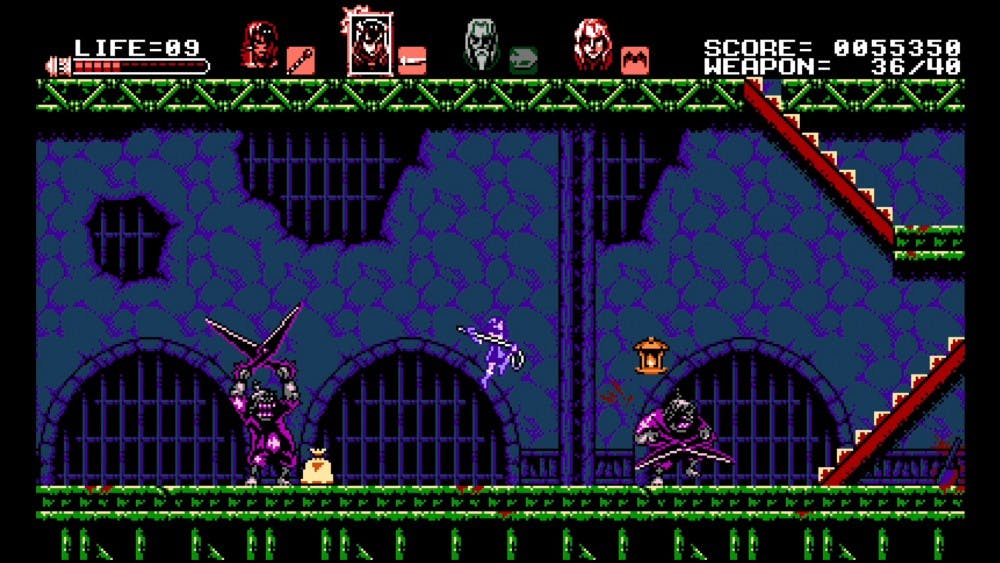
Image from Steam
Bloodstained: Curse of the Moon plays like the original Castlevania trilogy on NES, though it shares the most similarities with Castlevania III. It’s a 2D platformer, where the raw platforming is less of an obstacle than the enemies blocking the path. The game won’t require any frame perfect jumps or leaps of faith, but it does take a lot of careful attention to not get knocked back into a pit. There are four playable character, and all of them play slightly differently. Zangetsu is somewhere between Simon Belmont and Ryu Hyabusa, Miriam plays closer to Castlevania IV Simon with a long range whip, Alfred is dead-weight, and Gebel is just Alucard from Castlevania III. The amount of characters adds a lot of variety, and surprisingly creates attachment between the player and the cast without any dialogue at all.
Once again, just like the visuals and music, this game is old-school Castlevania. That includes the fun parts, like the variety of sub-weapons and branching paths that lead to different platforming challenges and sometimes even secrets to uncover. The attacks are also satisfying in their weight, particularly Miriam’s whip, though Gebel’s dumb shadow attack is fun in it’s own way. The game also has the… “quirks” of Castlevania.
To explain, one of the key traits of Castlevania platforming is the “unique” jumping. Unlike Mario, Mega Man, Kirby, Ninja Gaiden, Contra, or any other classic platformer, jumping in Castlevania is a commitment. And that’s no different in Bloodstained. The jump arc is decided the moment the jump button is pressed, and cannot be altered in the air. If the player isn’t careful, they could easily launch themselves into instant death before the enemies even get a chance to intervene. Heavy knockback also sticks around, with enemies being able to send the player flying back into traps, other enemies, and usually instant death. It’s something to adjust to and, while I’m personally not a fan of the Castlevania-style, Bloodstained puts in a lot of effort into making the game much fairer.
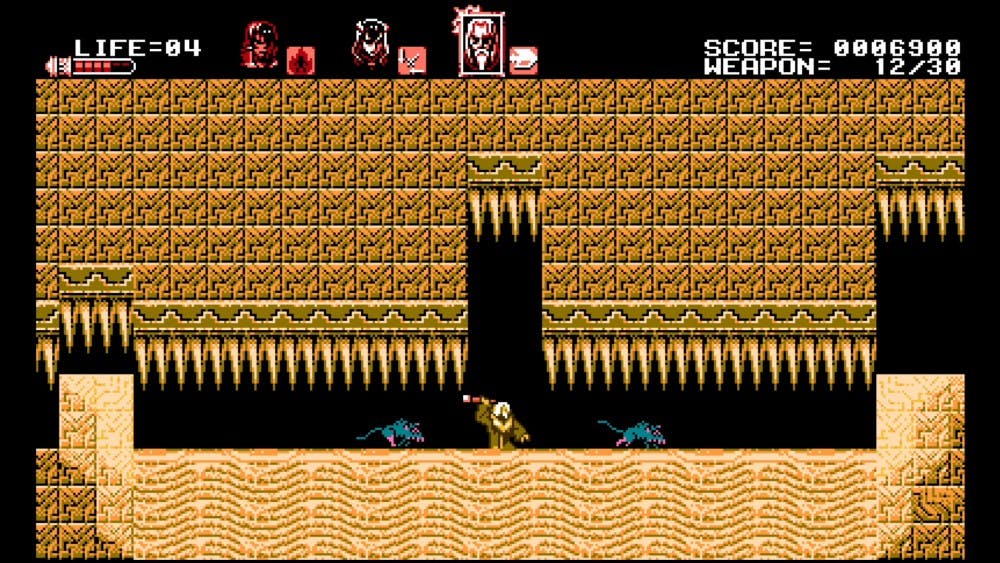
Image from Steam
The levels are much more fairly designed for the mechanics of the game, with few moments that match the worst parts of Castlevania. Only in a few spots does the game feel cheap by having enemies placed in a way that the player is almost guaranteed to get sent into a pit of death on their first try. It’s frustrating in certain levels, like one hallway in level five and most of the final level, but the punishment for death isn’t nearly as severe as it would be in the original Castlevania. Since Bloodstained has a cast of four characters, each has their own health bar—which makes each individual life actually more like four lives. This means that the platforming parts of the game are more manageable, and bosses can be taken down through the course of four full health bars if the player is paying attention. It’s actually a lot of fun switching between the characters to deal with platforming sections, even if most of my attempts would end in me desperately trying to rush the next checkpoint with Alfred, praying not to get insta-killed. It makes classic Castlevania more accessible and fun, which is a tremendous feat.
Difficulty and length that exceed expectations
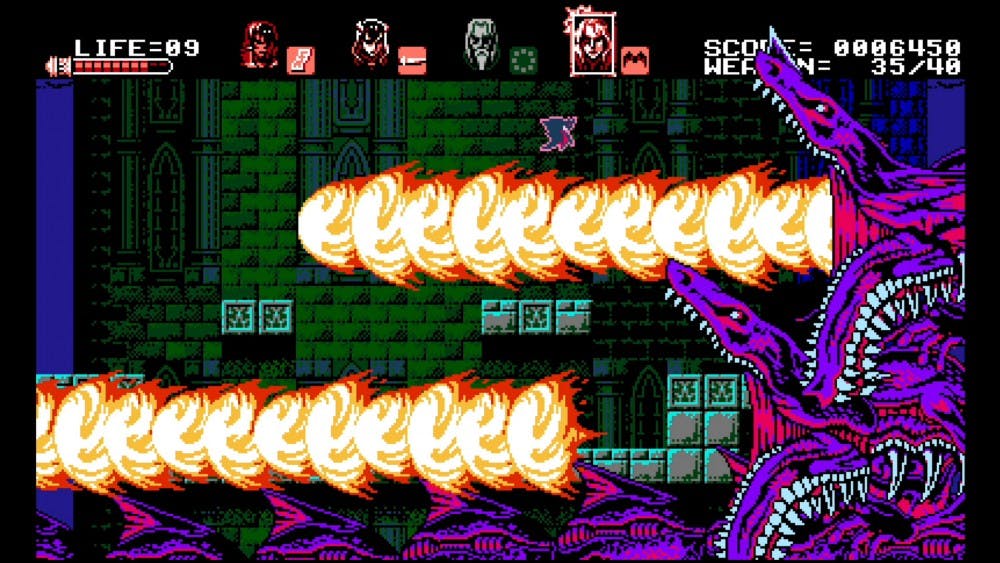
Image from Steam
The last part of Bloodstained: Curse of the Moon that completes its NES platformer style is the difficulty. Bloodstained is not an easy game. It will leave the player screaming in frustration, throwing things, and eventually finding satisfaction when the level is finished and the level complete jingle plays. There may have been a lot of effort to make the game more accessible for players who haven’t played the original Castlevania games, but it’s still not an easy game. For those who find the challenge too daunting, but love the style and beautifully simplistic story, there’s a “casual mode” that removes some of the more unfair quirks of the game. For veterans who blow through the game in under two hours, which I managed to barely do, there’s also a “nightmare” difficulty. I didn’t personally try it out, but I imagine it brings back more of the classic Castlevania quirks that the base game removed.
Length is actually something Bloodstained handles really well. Generally, these retro style games are short when played casually, and able to be beaten in under two hours. The first playthrough of this game is definitely like that. However, a number of different endings, bonus difficulties, and challenge modes add additional playtime for those who really want to sink their teeth into a platformer like this. It also seems like it’ll be a great game for speedrunners. So, for fans of beating a game a quickly as humanly possible, there are a lot of options. And all of that is for a modest $10 price tag. For a game of this quality, that’s almost a steal.
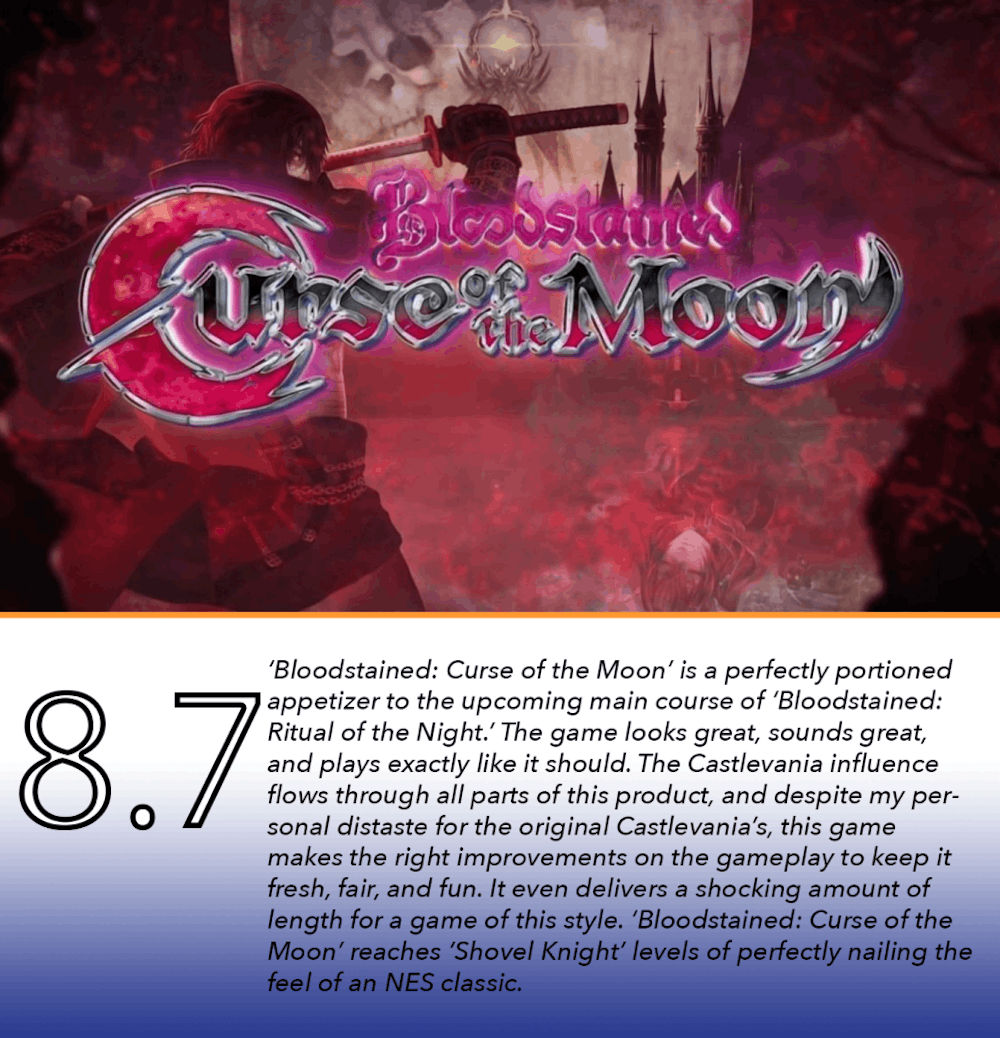
Featured image from IGN
For more entertainment related content, visit us at Bytebsu!

